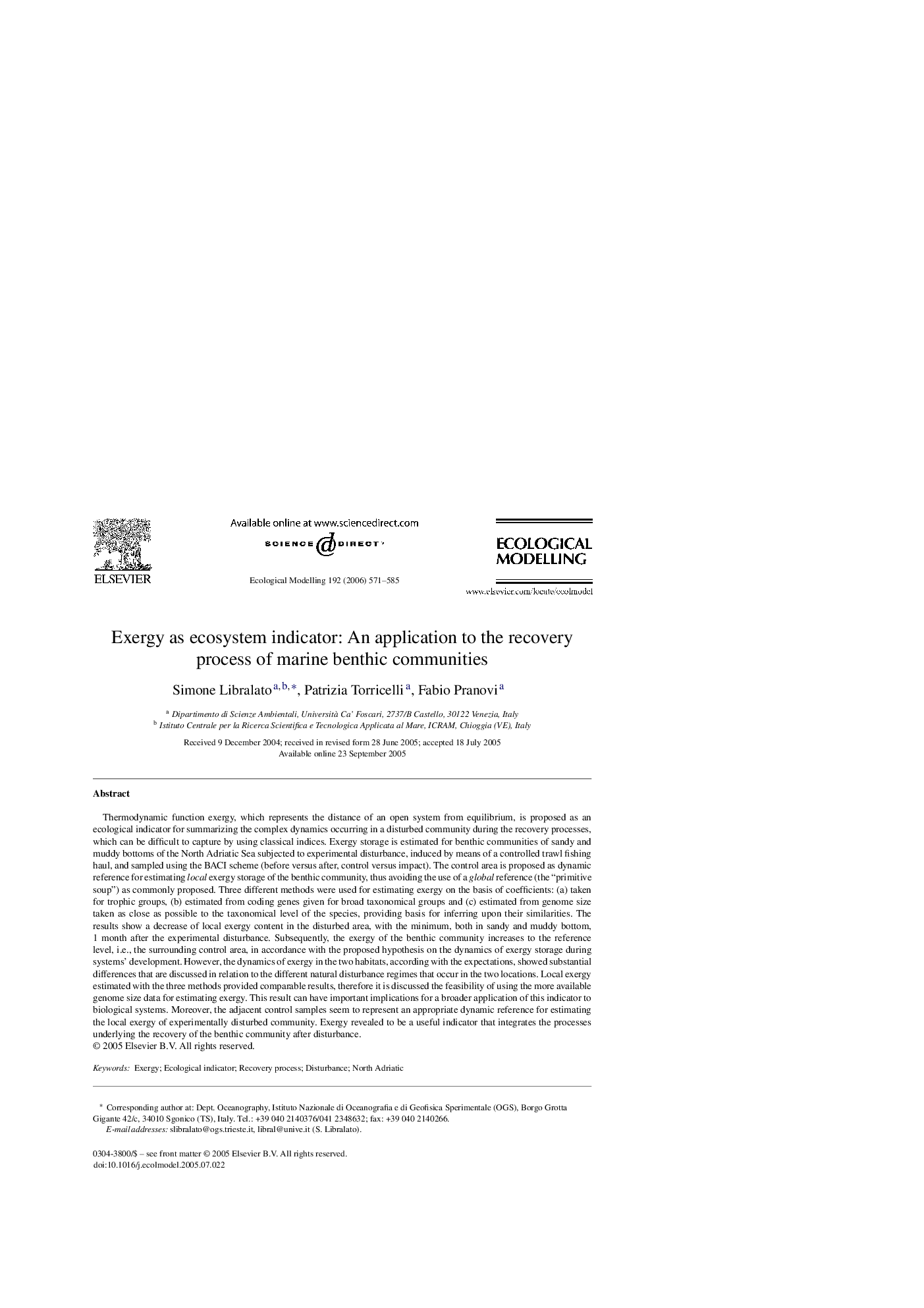| Article ID | Journal | Published Year | Pages | File Type |
|---|---|---|---|---|
| 4379295 | Ecological Modelling | 2006 | 15 Pages |
Thermodynamic function exergy, which represents the distance of an open system from equilibrium, is proposed as an ecological indicator for summarizing the complex dynamics occurring in a disturbed community during the recovery processes, which can be difficult to capture by using classical indices. Exergy storage is estimated for benthic communities of sandy and muddy bottoms of the North Adriatic Sea subjected to experimental disturbance, induced by means of a controlled trawl fishing haul, and sampled using the BACI scheme (before versus after, control versus impact). The control area is proposed as dynamic reference for estimating local exergy storage of the benthic community, thus avoiding the use of a global reference (the “primitive soup”) as commonly proposed. Three different methods were used for estimating exergy on the basis of coefficients: (a) taken for trophic groups, (b) estimated from coding genes given for broad taxonomical groups and (c) estimated from genome size taken as close as possible to the taxonomical level of the species, providing basis for inferring upon their similarities. The results show a decrease of local exergy content in the disturbed area, with the minimum, both in sandy and muddy bottom, 1 month after the experimental disturbance. Subsequently, the exergy of the benthic community increases to the reference level, i.e., the surrounding control area, in accordance with the proposed hypothesis on the dynamics of exergy storage during systems’ development. However, the dynamics of exergy in the two habitats, according with the expectations, showed substantial differences that are discussed in relation to the different natural disturbance regimes that occur in the two locations. Local exergy estimated with the three methods provided comparable results, therefore it is discussed the feasibility of using the more available genome size data for estimating exergy. This result can have important implications for a broader application of this indicator to biological systems. Moreover, the adjacent control samples seem to represent an appropriate dynamic reference for estimating the local exergy of experimentally disturbed community. Exergy revealed to be a useful indicator that integrates the processes underlying the recovery of the benthic community after disturbance.
